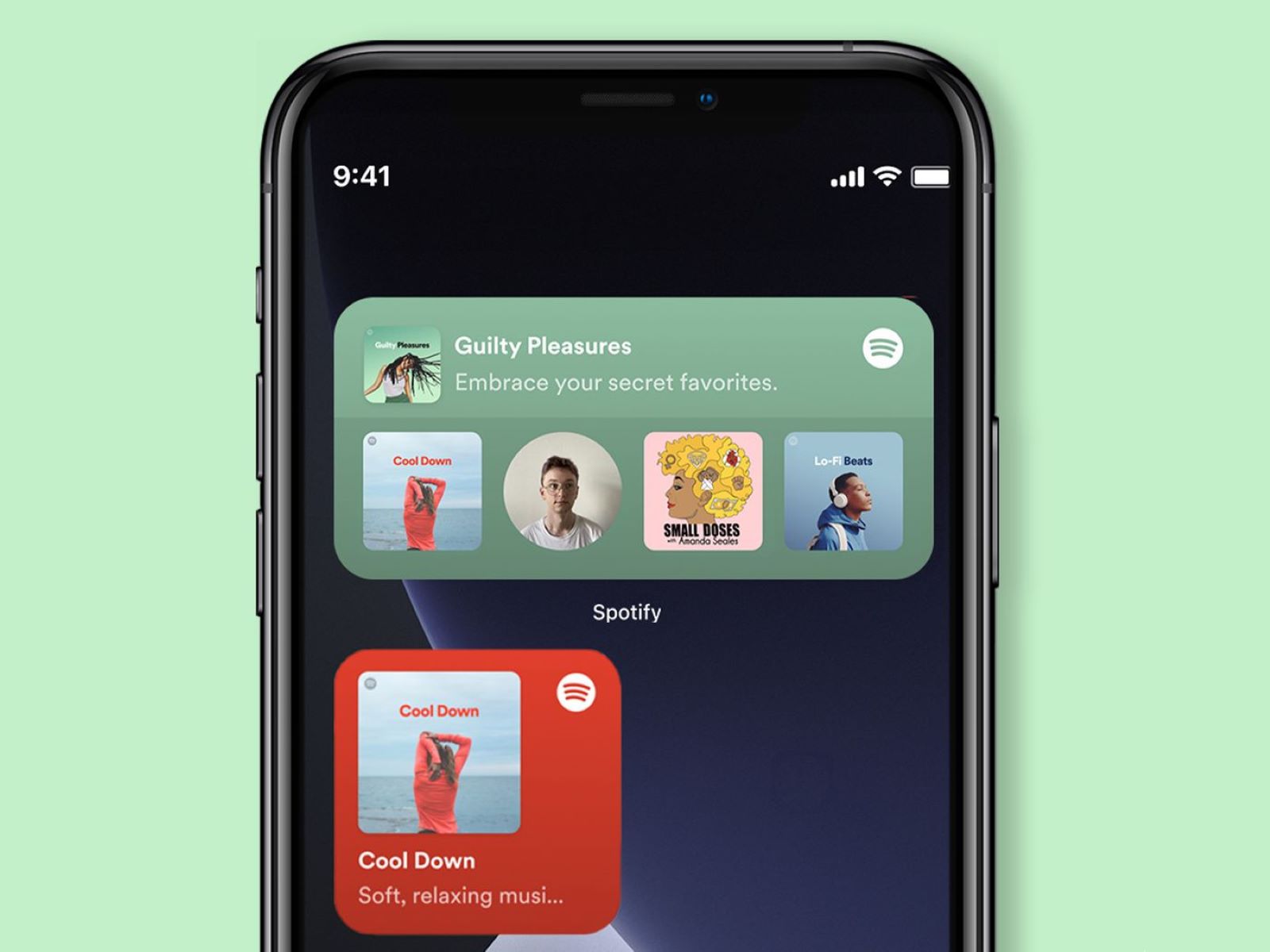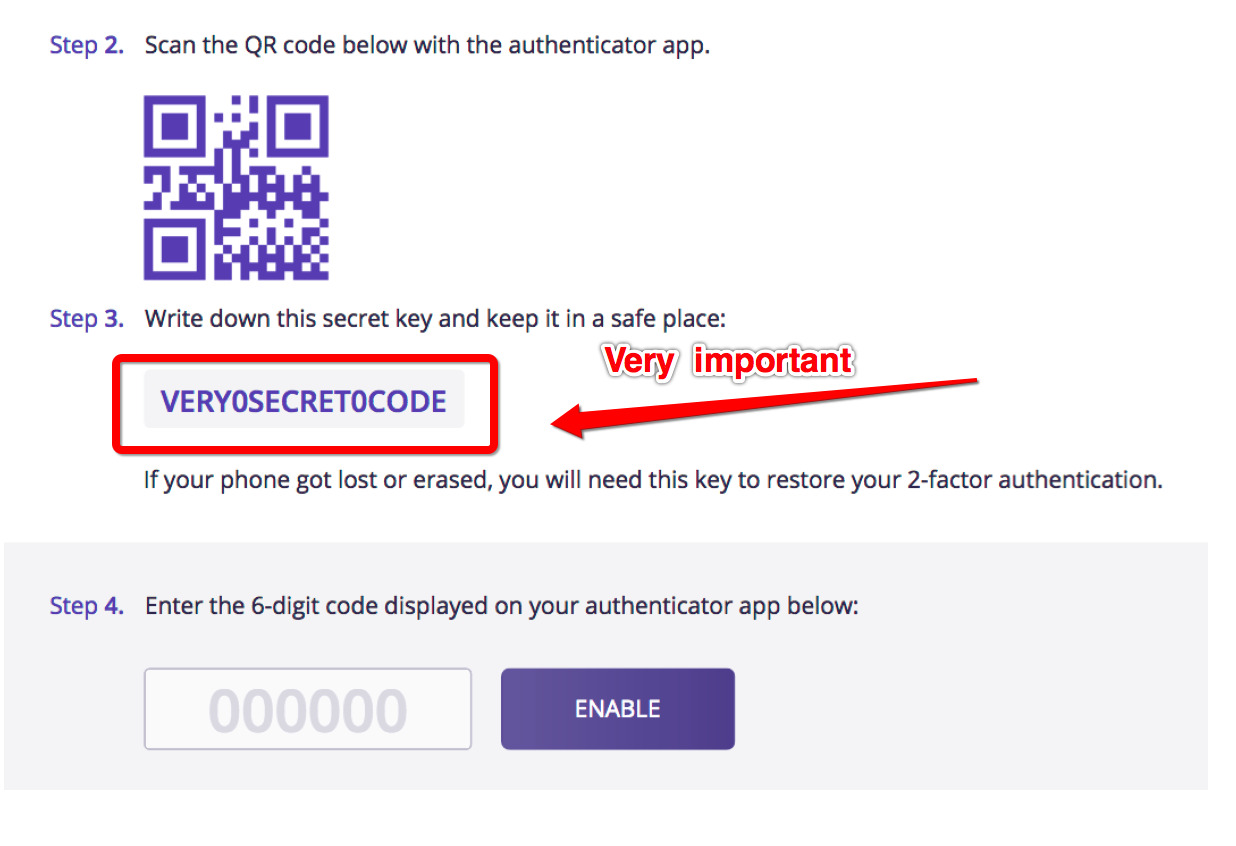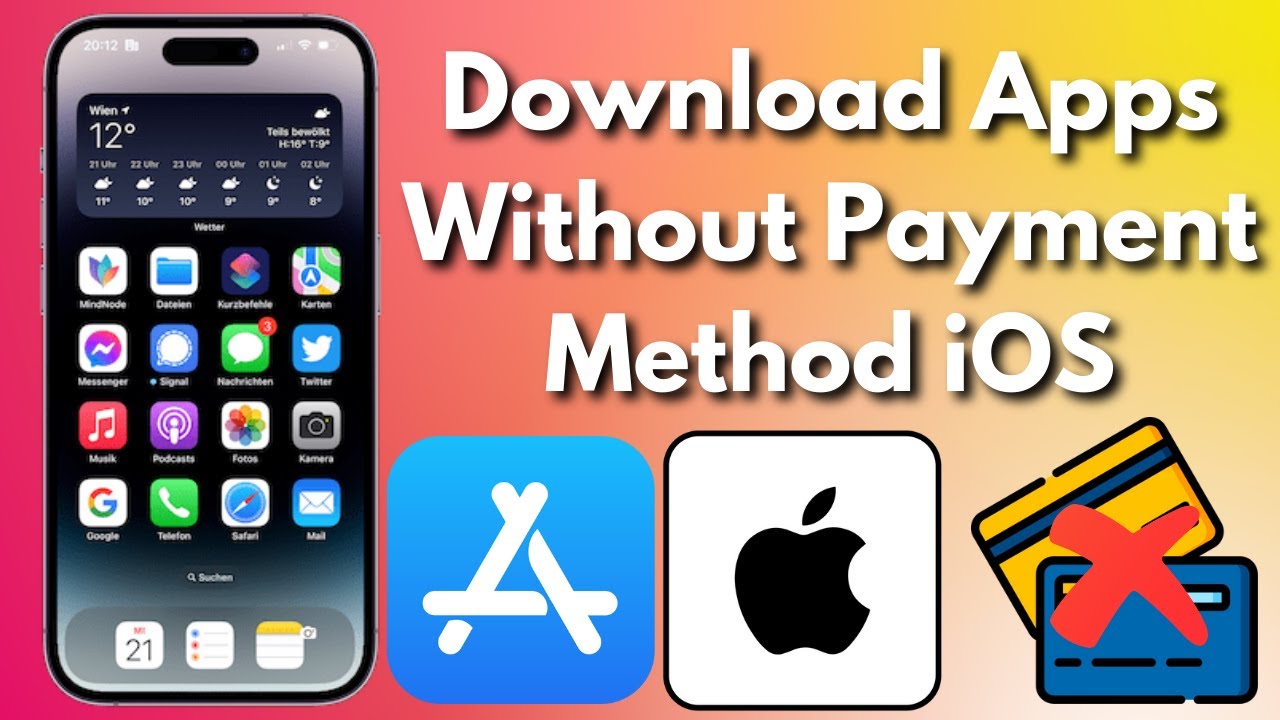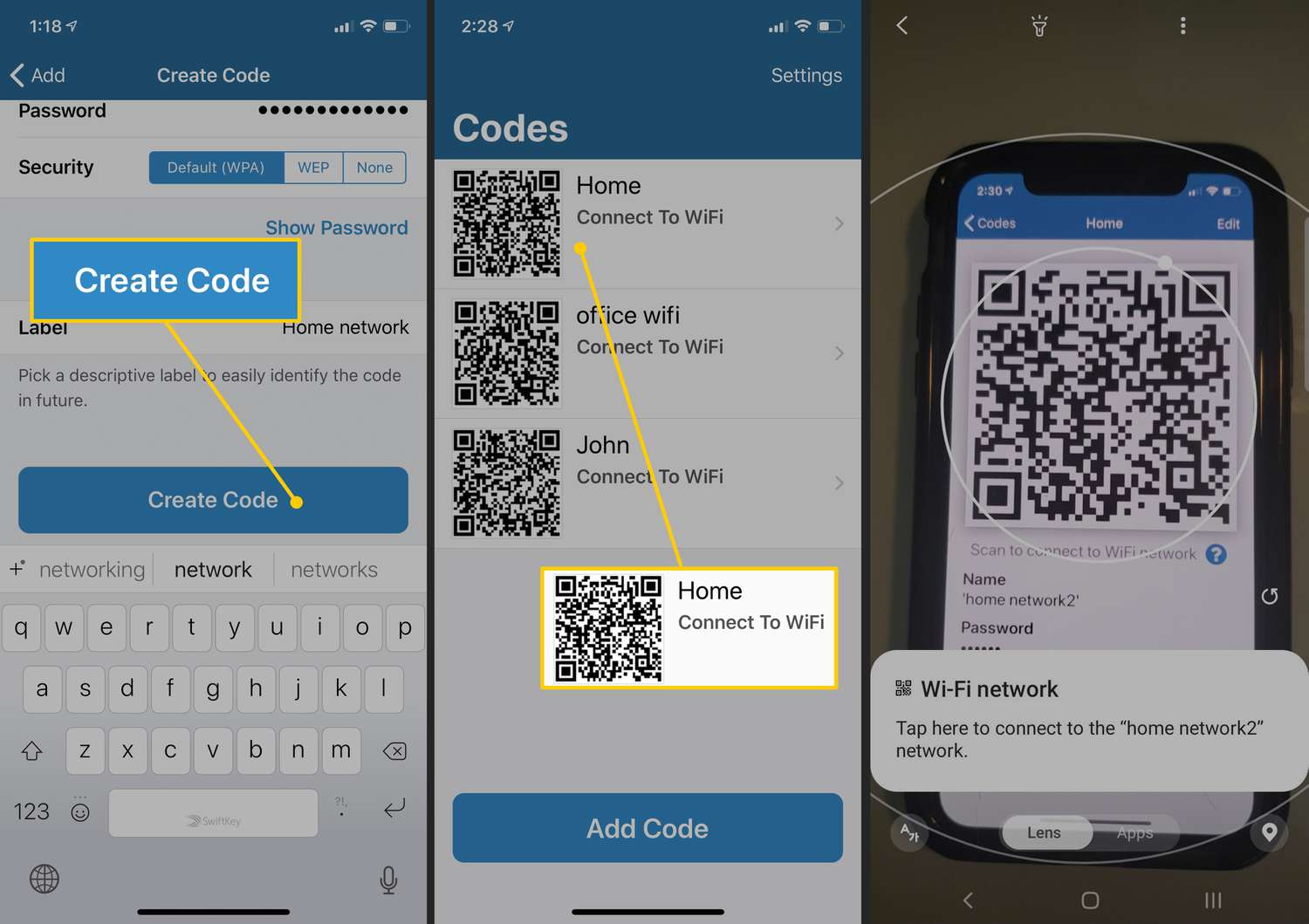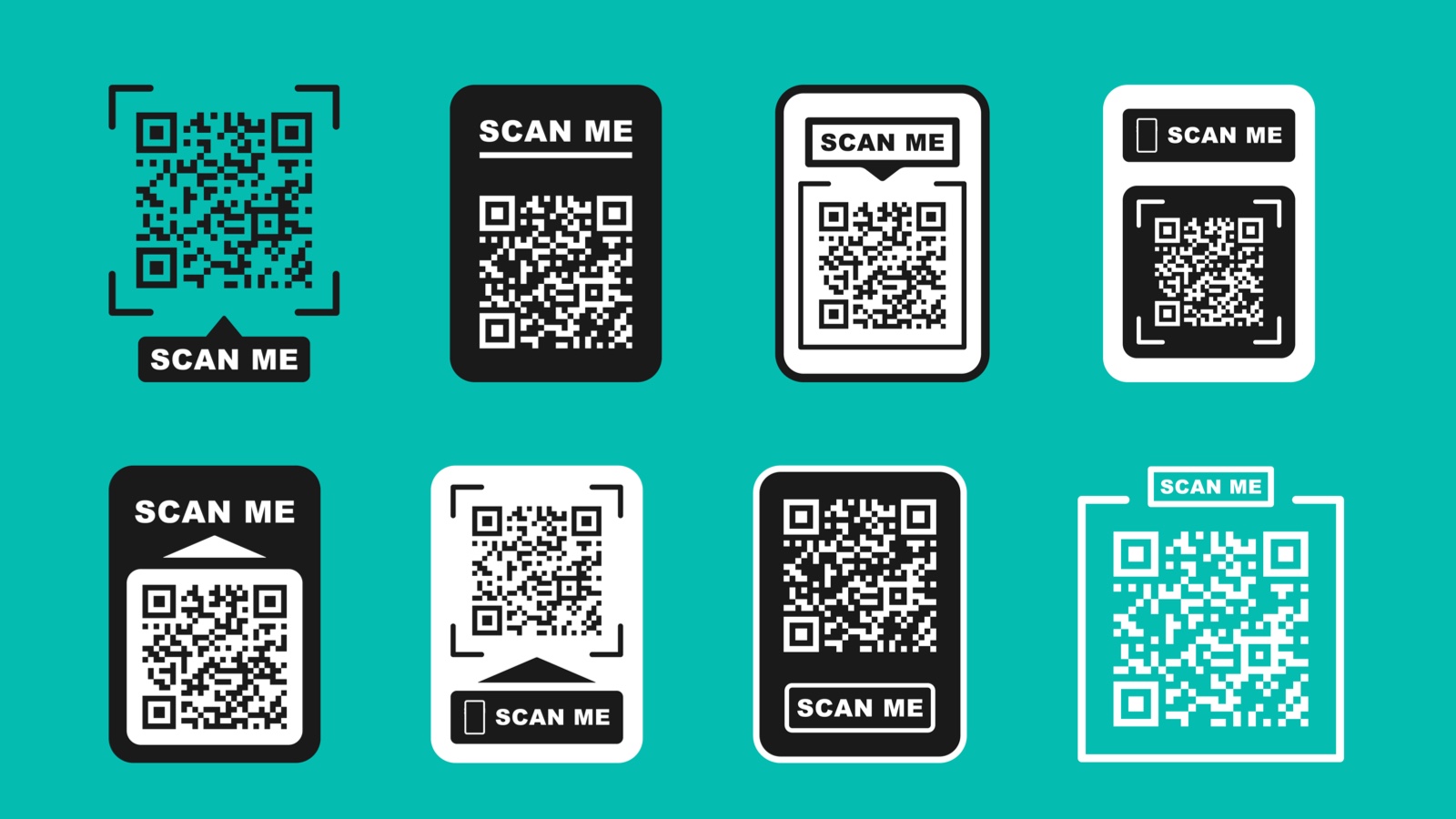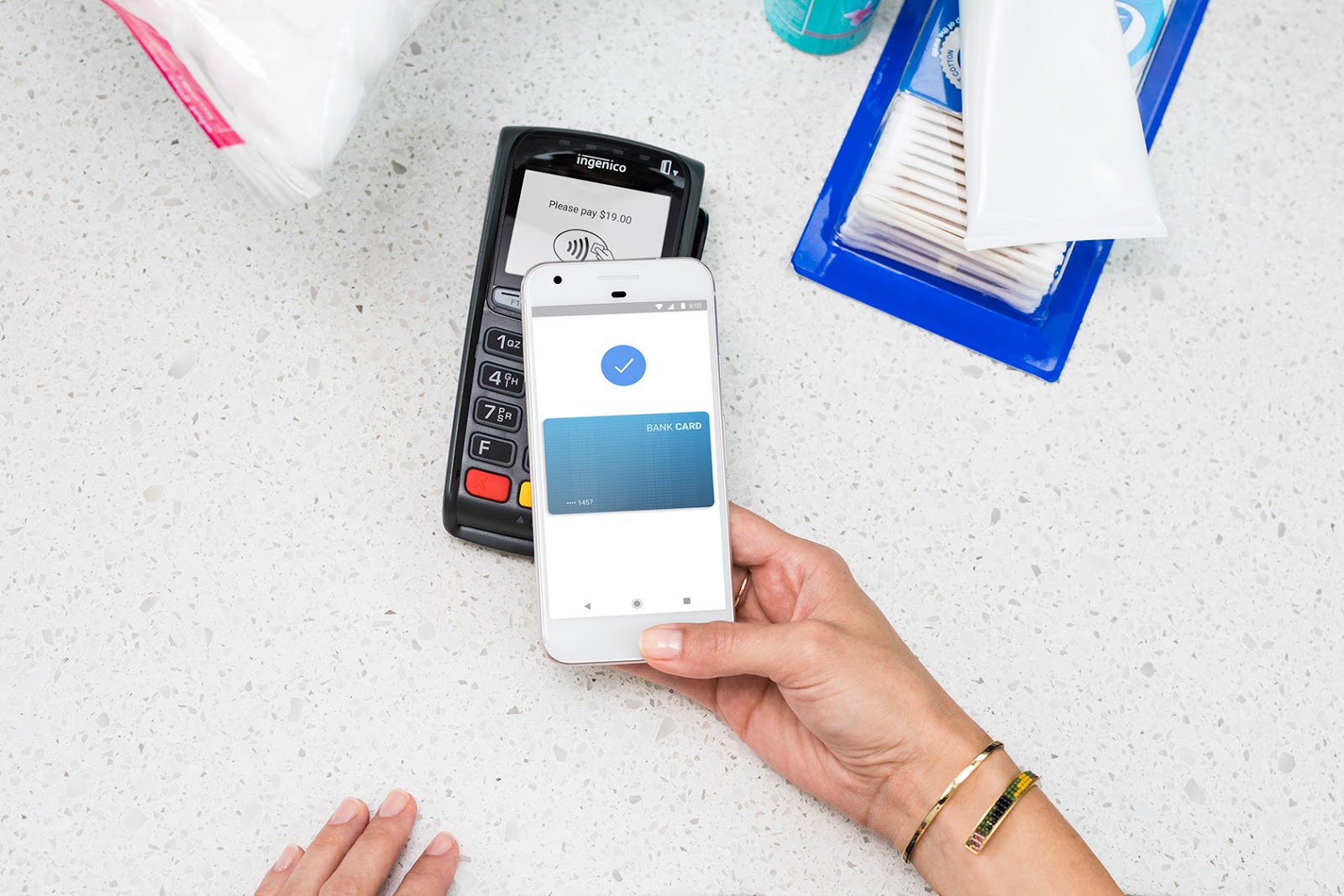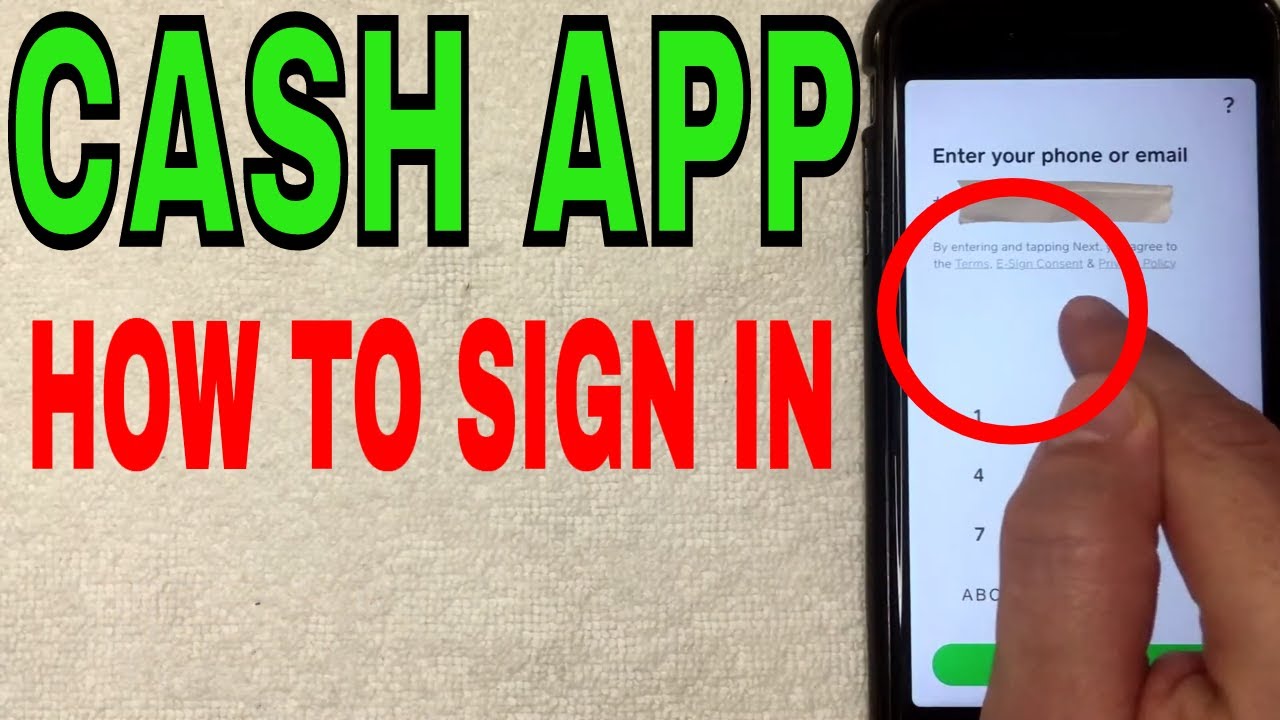Introduction
Welcome to the exciting world of app creation! In this digital age, having a mobile app can greatly benefit businesses, entrepreneurs, and individuals looking to reach a wider audience and provide a seamless user experience. However, you may be hesitant to embark on this journey due to the perceived complexity and technical knowledge required for app development. Luckily, there are now app building platforms available that allow you to create an app without coding.
These app building platforms have made it possible for people with little to no programming experience to create functional and attractive mobile applications. Whether you have a business idea you want to bring to life, want to create an app for your blog or event, or simply want to explore the world of app development, these platforms provide a great starting point.
By using app building platforms, you can save time and resources, as you won’t need to hire a professional developer or invest significant amounts of money in learning how to code. Instead, you can focus on the creative aspects and bring your app idea to reality in a matter of hours or days, depending on the complexity of your project.
In this article, we will guide you through the process of creating an app without coding. We will explore different app building platforms, discuss how to choose the right one for your needs, and provide step-by-step instructions on designing, adding features, customizing the appearance, testing, and publishing your app.
Whether you’re a small business owner, a blogger, a freelancer, or someone with a brilliant app idea, this guide will empower you to create a mobile app that meets your needs. Let’s dive in and explore the exciting world of app creation without coding!
Why Create an App Without Coding?
Creating an app without coding has become increasingly popular for several compelling reasons. Here are some key reasons why you might choose to take this route:
- Saves Time and Resources: Learning to code and develop a mobile app from scratch can be a time-consuming process. By using an app building platform, you can significantly reduce the time and effort required to bring your app idea to life. This allows you to focus on other aspects of your business or project.
- No Technical Knowledge Required: Not everyone has the coding skills or background to develop an app using programming languages like Java or Swift. App building platforms provide a user-friendly interface that eliminates the need for coding knowledge. This opens up the world of app creation to a broader audience.
- Cost-Effective Solution: Hiring a professional app developer can be expensive, especially for small businesses or individuals with limited budgets. Creating an app without coding eliminates the need to outsource development, saving you a significant amount of money. You can allocate these resources to other aspects of your business or invest them in marketing and promotion.
- Flexibility and Control: When you create an app without coding, you have complete control over the design and functionality of your app. You can customize elements based on your specific requirements, ensuring that the app aligns with your brand and caters to your target audience’s needs. This level of control allows for a unique and tailored app experience.
- Rapid Prototyping and Iteration: Building an app without coding allows for quick prototyping and iteration. You can test various features, layouts, and functionalities and gather feedback from users before finalizing your app. This iterative process helps improve the user experience and ensures that your app meets the expectations and needs of your target audience.
By opting to create an app without coding, you can overcome the technical barriers traditionally associated with app development. This empowers individuals and businesses to transform their ideas into reality, leverage the power of mobile platforms, and engage with their target audience in a meaningful way. In the next sections, we will explore popular app building platforms and guide you through the process of creating your app without coding.
Understanding App Building Platforms
Before diving into the process of creating an app without coding, it’s essential to understand what app building platforms are and how they work. App building platforms, also known as app makers or app builders, are intuitive tools that enable users to create mobile applications without any programming knowledge.
App building platforms typically provide a drag-and-drop interface, allowing users to select pre-designed templates, elements, and features to customize their app’s appearance and functionality. These platforms often offer a wide range of features and functionalities that can be easily integrated into the app, such as user registration, push notifications, social media integration, and more.
One of the significant advantages of app building platforms is that they provide a simplified development environment. Instead of writing lines of code, users can simply select and configure various elements to create the desired app structure and design. This intuitive approach makes app development accessible to individuals with no technical background or programming experience.
App building platforms also typically handle the technical aspects of app development, such as hosting, security, and updates. This means that users can focus on the creative aspects of app creation without worrying about the underlying technical infrastructure. Additionally, most platforms offer app preview and testing features, allowing users to see how their app will look and function on different devices.
It’s important to note that app building platforms may differ in terms of features, pricing models, and target audiences. Some platforms cater specifically to businesses, while others are more suitable for individual app developers or hobbyists. Before choosing an app building platform, it’s crucial to evaluate your specific needs, budget, and desired app features.
App building platforms have democratized the app development process, making it accessible to a wide range of users. Whether you’re a small business owner, a blogger, or an aspiring app developer, these platforms offer the tools and resources necessary to create professional and functional mobile applications. In the next section, we will discuss some key factors to consider when choosing the right app building platform for your needs.
Choosing the Right App Building Platform
With a wide range of app building platforms available, choosing the right one can be a daunting task. To ensure that you select a platform that aligns with your needs and goals, consider the following factors:
- Features and Functionality: Evaluate the features and functionalities offered by each app building platform. Consider the specific requirements of your app, such as user authentication, push notifications, e-commerce capabilities, or integration with third-party services. Choose a platform that provides the necessary features to create the app you envision.
- Design and Customization: Assess the design capabilities and customization options of each platform. Look for platforms that provide a wide range of app templates, customizable layouts, and branding options. Ensure that you can customize the app’s appearance to match your branding and create a visually appealing user interface.
- User Experience: Consider the user experience provided by each platform. Look for platforms with intuitive interfaces, seamless navigation, and user-friendly tools. The platform should make the app-building process straightforward and efficient, even for those without technical expertise.
- Platform Compatibility: Ensure that the app building platform supports both iOS and Android app development. Ideally, choose a platform that allows for simultaneous development of apps for both platforms, saving you time and effort. Additionally, verify if the platform supports different screen sizes and resolutions to ensure your app looks great on various devices.
- Cost and Pricing Model: Consider your budget when choosing an app building platform. Evaluate the pricing models, including subscription-based plans, one-time fees, or freemium options. Take into account any additional costs, such as hosting, app store submission fees, or premium features. Balance your budget with the features and capabilities offered by the platform.
- Support and Resources: Research the level of support and resources provided by the app building platform. Look for platforms with comprehensive documentation, tutorials, and support channels like email or chat. Additionally, check if the platform has an active community or forum where you can seek guidance and learn from other users’ experiences.
By carefully considering these factors, you can identify the app building platform that best suits your needs. Take the time to explore different platforms, read reviews, and try out free trials or demos when available. This will help you make an informed decision and choose a platform that empowers you to create a high-quality and functional app. In the following sections, we will guide you step-by-step through the process of creating your app without coding.
Gathering Your App Content and Resources
Before you start building your app, it’s important to gather all the necessary content and resources. This will ensure a smooth and efficient app creation process. Here are the key steps involved in gathering your app content and resources:
- Define Your App’s Purpose: Clearly identify the purpose and objectives of your app. Determine the main functionalities, features, and content that your app should have to meet its intended purpose. This will serve as a guiding framework throughout the app creation process.
- Content Creation: Create or gather the content that you want to include in your app. This can include text, images, videos, audio files, and any other multimedia elements that will enhance the user experience. Ensure that your content is engaging, relevant, and tailored to your target audience.
- Organize Your Content: Structure and organize your content in a logical manner. Determine how you want to categorize and present information within your app. Consider using a hierarchical structure, menus, or tabs to make it easy for users to navigate and access the content they need.
- Gather Visual Assets: Collect and prepare the visual assets for your app. This can include your logo, icons, images, and any other graphical elements that will be used in your app’s design. Make sure your visual assets are high-quality, appropriately sized, and on-brand.
- Prepare App Resources: Identify any additional resources that your app might require. This could include data files, APIs, or integrations with other services. Make sure you have access to these resources and understand how to incorporate them into your app.
- Consider Localization: If you plan to target a global audience, consider localizing your app. This involves translating your content into different languages and adapting it to suit different cultures. Gather the necessary translations or plan for localization services to ensure your app can reach a wider audience.
- Plan for Updates: Anticipate future updates and enhancements to your app. Assess whether you will need to regularly update your content, add new features, or make improvements based on user feedback. Having a plan in place for future updates will help you maintain a relevant and engaging app in the long run.
By gathering your app content and resources upfront, you’ll have everything you need to proceed with the app creation process. This will save you time and prevent delays as you move forward with designing and configuring your app. In the next section, we will explore the crucial step of designing your app’s layout.
Designing Your App’s Layout
The design of your app plays a crucial role in attracting and engaging users. A well-designed layout not only enhances the visual appeal of your app but also contributes to a seamless and intuitive user experience. Here are the key steps involved in designing your app’s layout:
- Consider User Flow: Start by understanding the flow of your app. Determine how users will navigate through different screens and interact with various features. Map out the user flow to ensure a logical and intuitive progression from one screen to another.
- Wireframing: Create wireframes or low-fidelity prototypes of your app’s screens. These wireframes serve as a visual representation of the layout and structure of your app. They help you visualize the placement of elements, such as buttons, menus, and content sections, ensuring a clear and organized app design.
- Select App Templates: Many app building platforms offer pre-designed templates that you can customize to fit your app’s purpose. Browse through the template options and choose one that aligns with your desired app layout and style. Templates can provide a good starting point and save you time in the design process.
- Customize App Elements: Once you’ve selected a template, customize the layout and elements to fit your app’s specific needs. Adjust the placement and size of buttons, images, text boxes, and other visual elements to create an aesthetically pleasing and functional design. Ensure that your app’s layout is visually balanced and consistent across screens.
- Typography and Colors: Choose appropriate typography and color schemes for your app. Select fonts that are easy to read on mobile devices and align with your brand’s personality. Consider color psychology and choose colors that evoke the desired emotional response from your target audience. Use colors consistently throughout your app to create a cohesive and polished look.
- Optimize for Different Screen Sizes: Design your app to be responsive and adaptable to different screen sizes and resolutions. Ensure that your layout remains user-friendly and visually appealing on both smaller mobile devices and larger tablets. Test your app’s layout on different devices to ensure a consistent user experience.
- Emphasize Usability: Prioritize usability in your app design. Avoid cluttered screens and unnecessary elements that might confuse or overwhelm users. Use clear and descriptive labels for buttons and navigation elements. Optimize the placement of interactive elements to make it easy for users to navigate and perform actions within the app.
By following these steps, you can create a well-designed app layout that enhances the user experience and showcases your content and features effectively. The next section will cover the process of adding features and functionalities to your app.
Adding Features and Functionalities
Now that you have designed your app’s layout, it’s time to add features and functionalities to enhance the user experience. The specific features you choose will depend on the purpose and goals of your app. Here are the key steps to follow when adding features and functionalities to your app:
- Identify Core Features: Determine the essential features that your app needs to fulfill its purpose. These could include user registration and login, search functionality, content display, social media integration, payment processing, or location-based services. Focus on implementing the core features first before adding additional extras.
- Choose App Building Platform Tools: Explore the tools and functionalities offered by your chosen app building platform. These may include pre-built modules or plugins for common features like user authentication, data storage, or messaging. Utilize these tools to simplify the implementation of various functionalities in your app.
- Configure Feature Settings: Customize the settings and behavior of each feature to align with your app’s requirements. For example, if you have a user registration feature, specify the required fields, password complexity, and any additional registration rules. Tailor each feature to provide a seamless and personalized experience for your app users.
- Test Functionality: After implementing a feature, thoroughly test its functionality to ensure it works as intended. Test different scenarios, inputs, and user journeys to identify and fix any potential bugs or issues. Conduct user testing and gather feedback to see how well the features meet user expectations and make necessary adjustments.
- Consider Third-Party Integrations: Explore opportunities for integrating your app with external services and APIs. This could include integrating with social media platforms, payment gateways, mapping services, or analytics tools. Assess the compatibility and documentation of these integrations to enhance your app’s overall functionality.
- Balance Simplicity and Complexity: Strive for a balance between simplicity and complexity when adding features. Avoid overwhelming users with too many features or options, as it may result in a cluttered and confusing user experience. Focus on delivering a streamlined and intuitive app by prioritizing the essential features and gradually incorporating additional functionalities.
- Consider User Feedback and Iteration: Monitor user feedback and usage patterns to identify areas for improvement or additional features. Iteratively enhance your app based on user feedback and emerging trends. Being responsive to user needs and continuously refining your app will result in a more engaging and satisfying user experience.
By carefully selecting and implementing features and functionalities, you can create an app that not only meets your users’ needs but also stands out in the competitive app market. The next section will cover how to customize your app’s appearance to create a visually appealing and on-brand experience.
Customizing Your App’s Appearance
Customizing the appearance of your app is an essential step in creating a compelling and visually appealing user experience. By customizing the app’s appearance, you can align it with your brand, improve usability, and leave a lasting impression on your users. Here’s how you can customize the appearance of your app:
- Choose a Theme: Select a theme or color scheme that represents your brand or app’s purpose. Consider the psychology of colors and choose colors that evoke the desired emotions in your users. Ensure that the color combinations are visually pleasing, easy to read, and appropriate for your app’s content.
- Logo and Branding: Incorporate your logo and branding elements into your app’s design. Place your logo in a prominent position to reinforce brand recognition. Use consistent branding elements such as fonts, colors, and icons throughout the app to create a cohesive visual identity.
- Typography: Choose fonts that are easy to read and aligned with your app’s purpose and target audience. Consider using different font styles for headings, body text, and buttons to create visual hierarchy and improve readability. Ensure that the font sizes are appropriate for mobile devices.
- Layout and Spacing: Pay attention to the layout and spacing of elements in your app. Use whitespace effectively to create a clean and organized design. Ensure that buttons, text boxes, and other interactive elements have sufficient spacing to prevent accidental clicks or touch errors.
- Images and Visuals: Incorporate high-quality images, icons, and graphics that align with your app’s content and style. Choose visuals that enhance the user experience without compromising loading time. Consider using visuals to guide users through the app’s functionalities and make the content more engaging.
- Animations and Transitions: Utilize subtle animations and transitions to enhance the user experience and provide feedback for user interactions. Smooth transitions and animations can create a more polished and professional feel to your app.
- Consistency: Maintain consistency in the design elements throughout your app. Ensure that buttons, icons, and other visual elements have consistent shapes, sizes, and colors across screens. This promotes familiarity and a sense of coherence, making it easier for users to navigate your app.
- Accessibility Considerations: Ensure that your app’s design is accessible to all users, including those with visual impairments or disabilities. Use proper color contrast, provide alternative text for images, and consider incorporating assistive technologies, such as screen readers, where applicable.
By customizing your app’s appearance, you can create a visually pleasing and engaging experience for your users. A well-designed and cohesive app not only enhances usability but also strengthens your brand identity. In the next section, we will discuss the importance of testing your app before its final launch.
Testing Your App
Testing your app is a crucial step before its final launch. Through thorough testing, you can identify and resolve any issues or bugs, ensuring a smooth and seamless user experience. Here’s how you can effectively test your app:
- Functional Testing: Test all the functionalities and features of your app to ensure they work as intended. Perform tests on different devices and platforms to uncover any device-specific bugs or compatibility issues. Pay close attention to user inputs, data retrieval, and interactions with external services or APIs.
- Usability Testing: Conduct usability testing to gauge the user experience of your app. Recruit individuals from your target audience to navigate through your app and provide feedback. Observe their interactions, note any difficulties or confusion, and make necessary adjustments to improve usability and user satisfaction.
- Performance Testing: Evaluate the performance of your app by testing its speed, responsiveness, and resource usage. Determine how quickly the app loads, how smoothly it transitions between screens, and how it handles various user scenarios. Identify any performance bottlenecks and optimize your app’s code to ensure optimal performance.
- Compatibility Testing: Test your app on a variety of devices, operating systems, and screen sizes to ensure compatibility across different platforms. Pay attention to any device-specific issues or inconsistencies in the app’s appearance and functionality. Adjust your design and code as necessary to provide a consistent experience for all users.
- Security Testing: Ensure the security of your app by conducting security testing. Identify any vulnerabilities that could potentially compromise user data, such as insecure data storage or weak authentication mechanisms. Implement proper encryption, secure authentication protocols, and other security measures to protect user information.
- User Acceptance Testing: Engage with a group of representative users to perform user acceptance testing. Obtain their feedback and observations regarding the app’s usability, visual appeal, and overall satisfaction. Consider their perspectives and make any necessary adjustments to address their concerns and preferences.
- Bug Fixing and Iteration: Document and prioritize any bugs or issues that arise during testing. Address these issues promptly by fixing the code and retesting the affected areas of your app. Repeat the testing process until all identified issues have been resolved and the app functions smoothly.
- App Store Preparations: If you plan to release your app on app stores, familiarize yourself with their submission guidelines and requirements. Ensure that your app meets the necessary criteria for acceptance, such as app icon specifications, privacy policy inclusion, and compliance with platform-specific design guidelines.
Thorough testing is essential to ensure a high-quality app that provides a positive user experience. By identifying and addressing any issues beforehand, you can launch a polished and reliable product. In the next section, we will cover the final step of the app creation process – publishing your app to the app stores.
Publishing Your App
Once you have completed the development and testing phase of your app, it’s time to publish it and make it available to users. Here are the key steps to follow when publishing your app:
- App Store Research: Familiarize yourself with the guidelines and requirements of the app stores you plan to publish your app on, such as the Apple App Store and the Google Play Store. Understand their submission processes, review policies, and any specific design or content guidelines they have in place.
- Prepare App Store Assets: Gather all the necessary assets required for submission, such as your app icon, screenshots, and promotional graphics. Ensure they meet the app store’s specifications regarding size, resolution, and file format. Have a compelling app description and keywords that accurately convey the features and benefits of your app.
- Register as a Developer: Sign up as a developer on the app store(s) you wish to publish your app on. Follow the registration process and provide the necessary information and payment details. This step may involve a one-time fee, so be prepared to make the required payment.
- App Submission: Use the app store’s developer console to submit your app for review. Fill in the required details, including the app’s name, description, keywords, and category. Upload your app binary file, screenshots, and other assets as specified by the app store’s submission guidelines.
- App Review Process: The app store will review your app and ensure it meets their guidelines and policies. Be prepared for this process to take some time, as it can vary depending on the app store and the number of submissions they receive. Address any issues or feedback provided by the app store and make the necessary changes to comply with their requirements.
- App Store Optimization: As part of the publishing process, optimize your app’s store listing for visibility and discoverability. Use relevant keywords in your app’s title, description, and metadata to improve search engine rankings. Encourage positive user reviews and ratings to bolster your app’s reputation and credibility.
- App Release: Once your app has successfully passed the review process, it’s time to release it to the app store. Choose the appropriate release strategy, such as a full launch or a limited release to a specific audience. Promote your app through marketing efforts, social media, and other channels to generate initial buzz and drive downloads.
- Post-Launch Monitoring: Monitor your app’s performance and user feedback after the release. Keep track of app store reviews, user ratings, and any reported issues. Continuously update and improve your app based on user feedback and emerging trends to provide the best possible experience.
Publishing your app to app stores is a significant milestone, but it’s important to note that the work doesn’t end there. Actively promote and maintain your app to ensure its success and continuously engage with your user base. By following the steps outlined above, you can successfully publish your app and start reaching your target audience.
Conclusion
Congratulations on completing the journey of creating an app without coding! Throughout this article, we explored the process of app creation, from understanding app building platforms to publishing your app. By utilizing app building platforms, you were able to save time, resources, and eliminate the need for coding knowledge. This not only made app development accessible to a broader audience but also empowered individuals and businesses to bring their app ideas to life.
We discussed the importance of considering factors such as features, customization options, and platform compatibility when choosing the right app building platform. Additionally, we emphasized the significance of gathering your app content and resources, designing an appealing layout, adding essential features and functionalities, and customizing your app’s appearance. These steps collectively contribute to creating a well-rounded app that caters to the needs and preferences of your users.
Testing your app thoroughly before publishing is crucial to ensure a seamless and bug-free user experience. Through functional testing, usability testing, performance testing, and more, you can uncover and address any issues or areas for improvement. Finally, we explored the process of publishing your app, including app store research, asset preparation, app submission, review processes, app store optimization, and the release of your app to the public.
Remember that app creation is an ongoing journey. Continuously gather user feedback, monitor app performance, and make improvements based on user needs and emerging trends. As technology evolves, keep pace with new features and functionalities that can enhance your app’s capabilities and user satisfaction.
Creating an app without coding is an exciting opportunity that allows you to share your ideas, provide value to your target audience, and potentially even generate revenue. With dedication, creativity, and a user-centric approach, you can create a successful app that resonates with users and achieves your goals. So, equip yourself with the knowledge gained from this article, embark on your app creation journey, and enjoy the fulfilling process of bringing your app idea to life.









